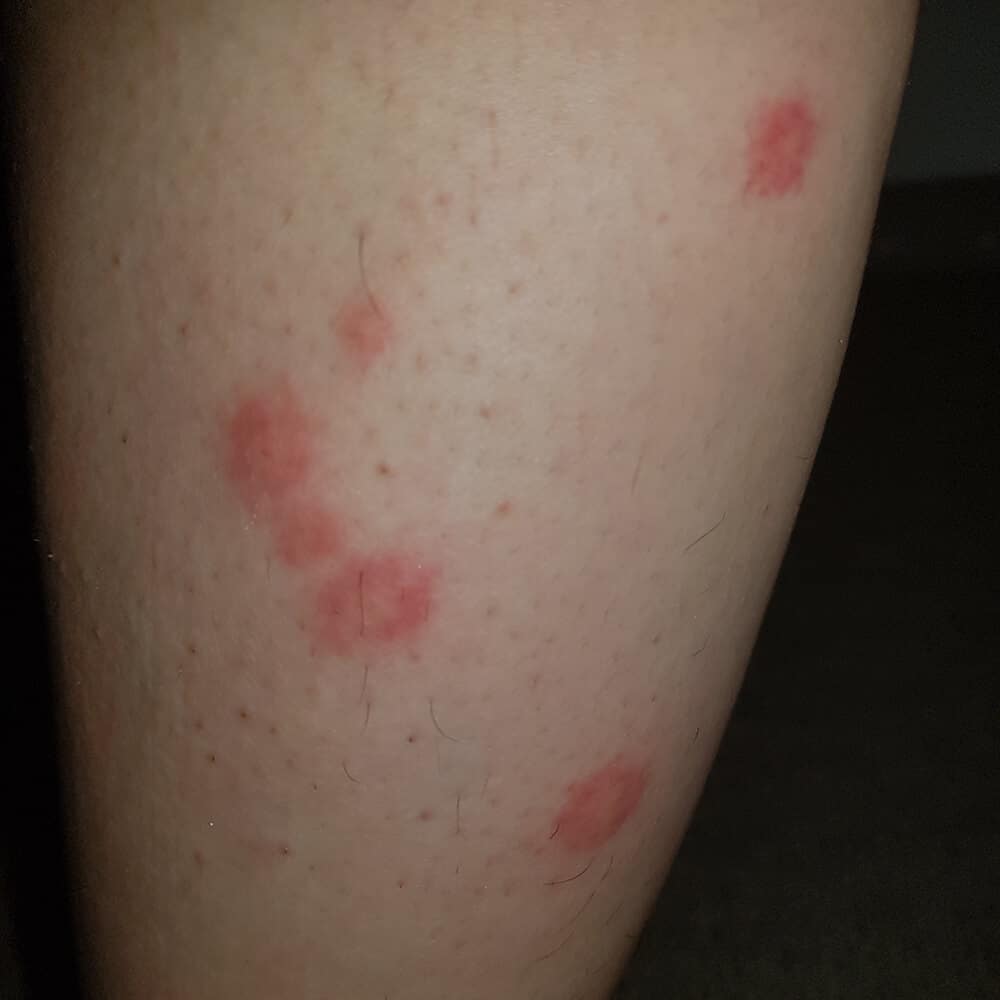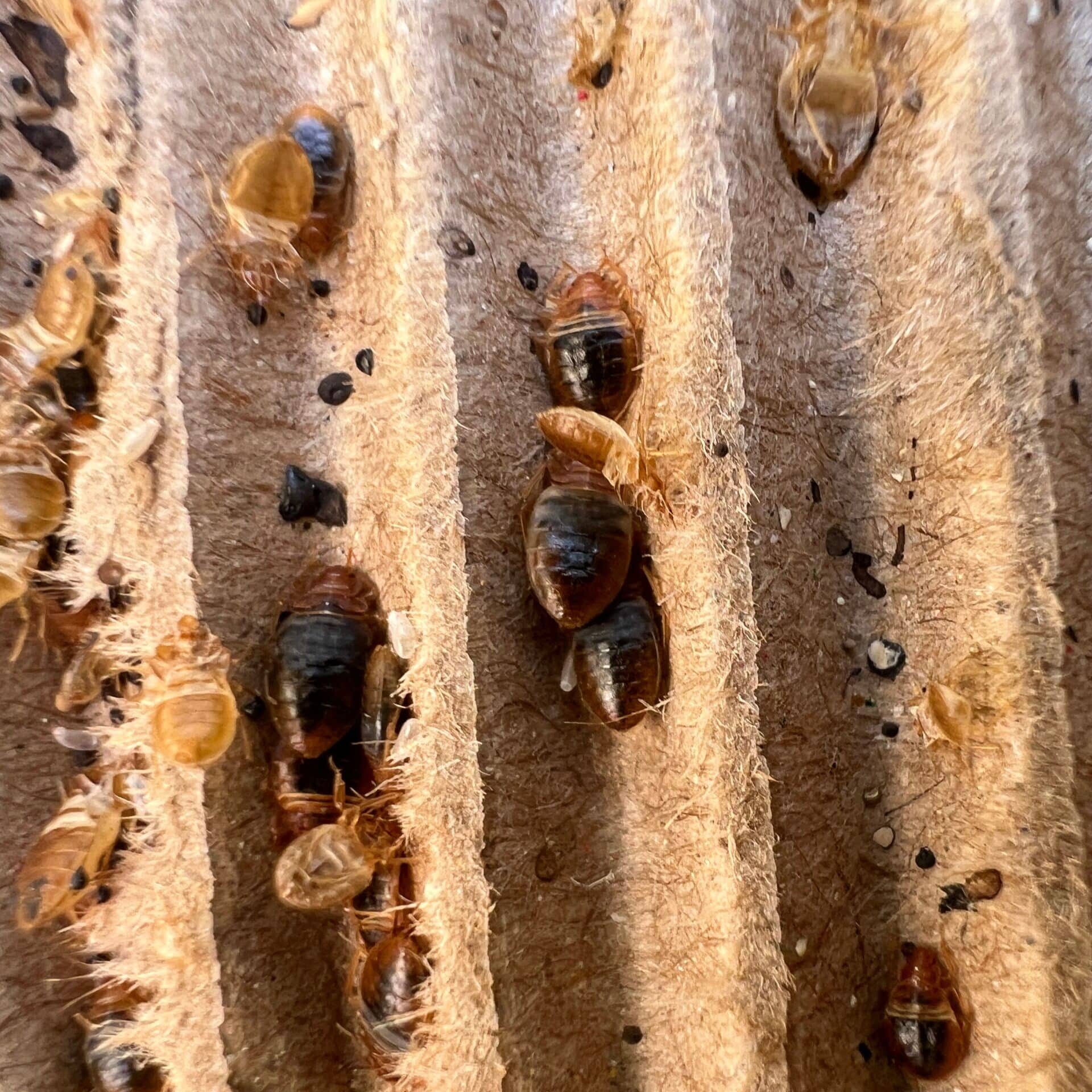
In the article
We’ve put together this guide on how to check for the early signs of bed bugs and their infestations, so you can begin treatment fast and rest easy going forward.
A bedbug infestation is a horrendous thing to have to live with. Not only can it leave you with itchy skin, but the association with bites and your bed can also leave you with sleep anxiety or even insomnia. Knowing how to tell if you have bed bugs in the early stages is an important part of dealing with the infestation, as the longer you leave it, the more they can multiply. Bedbugs don’t breed as quickly as some other pests, which means if you can identify them early on, you could save yourself from dealing with a much larger issue.
Early Signs of Bed Bugs on the Skin
As the old saying goes, you don’t want to let the bed bugs bite. Annoyingly, as bedbugs are so small and hard to see with the naked eye, there’s a likelihood that your skin will be the first indication that you have an infestation to deal with.
If you go to bed and wake up with itchiness or irritation in specific places that you’re not used to, then likely to be one of the clearest early bed bug signs. Depending on your own skin’s makeup and sensitivity, the irritation can vary pretty dramatically, with some suffering a mild irritation and others feeling a debilitating degree of discomfort. It’s also worth remembering that they will generally target the upper body rather than the bottom half, so it might be worth second-guessing that itchy ankle.
However, despite the frustration and discomfort of waking up with irritation, it’s important to know how to identify bedbugs and their bites in comparison to other causes of itchiness, like sheets that need to be cleaned. The clearest way to tell is by identifying the bites themselves.
Early Signs of Bed Bug Bites
With the itchiness of bed bugs comes their bites, which can be identified visually with relative ease. One of the telltale signs of bedbug bites, in comparison to other insect bites, is that they’re most likely to congregate around the hands, arms, and upper body, although bites on the legs aren’t totally uncommon either. You can also identify bedbug bites by the patterns that they appear in, with the spread being fairly random but often denoted by small lines, which signify a successful meal time for one of the creepy critters.
The bites themselves generally take the form of small red bumps, but somewhat concerningly, around 30% of people report no reaction to bed bugs whatsoever. They’re generally not dangerous; however, in some cases, people can have more adverse reactions, even going as far as anaphylaxis. As mentioned before, however, bedbug bites can also cause anxiety, insomnia, and stress-related to going to bed, each of which can themselves be early signs of infestations.

Bed Bug Bites On Leg
Early Bed Bug Signs on Sheets
There are both visual and smell-based cues that you can keep your eye (and nose) out for when it comes to bed bugs in your sheets. Bedbugs feed at night, so unless you act out a full investigation in the early days, there are going to be three main things that clue you up about their presence on your bed: blood stains, fecal stains, and an odour.
Blood Stains:
Bed bugs are like vampires – they feed on human blood, and they’re very greedy. Once a bedbug has fed on you, it will become engorged with blood, swelling up into a round, ball-shaped creature, and when they’re in this state, there’s a good chance they’re going to leave stains on your sheets.
This is caused by you moving and shifting in your sleep onto them and crushing them, either whilst or just after they’ve finished feeding. While this sadly won’t always kill them, it can still squeeze the blood out of them and leave little dark red spots on your sheets. Stains like these can also be left behind by their saliva after a feeding. If you notice these, then make sure to check your body for any new scratches, cuts, or wounds. If you can’t find any, then there’s a good chance that you’re looking at early bed bug stains on sheets.
Fecal Stains:
Along with the liberty of occupying your bed space and feasting on your blood, bedbugs will further their disrespect by relieving themselves on your sheets! After they’ve eaten and digested your blood, the colour of the blood will shift from a red to a dark brown or even black, which you will then see on your bedsheets and in the bed bug’s hiding spots once they excrete it out.
These stains slightly resemble the kinds that you might see from a magic marker, especially if streaked by movement or water. The size is similar to the tip of such markers, so if you suspect that you might be under invasion, look for the poo! These marks can also show up on the mattress, your pyjamas, headboards, walls, curtains, and anywhere else that you might find bedbugs.
Odours:
Along with the smells from your own blood and the fecal matter of the bed bugs, these uninvited guests also spread odours in different ways. Bedbugs give off pheromones if they feel that they’re under threat of attack, and they have a unique odour that is often compared to raspberries, coriander, or a generally unpleasant musk.
While you’re unlikely to smell these pheromones on their own, the smell of them will mix and mingle with those of the feces, shell casings, and dead bed bugs, making for a truly nasty-smelling experience. If you can’t detect it early, the smell will worsen until it becomes a truly offensive sensation.
Early Signs on Mattress
Beyond your sheets, you can also find the same visual and smell cues that indicate the presence of bed bugs on your mattress. However, there are also some signs of bedbugs on mattresses that you’re more likely to find when you investigate a little more thoroughly.
Once you suspect an infestation is taking place, you should strip your mattress of all its bedding and properly look at it in detail to find the clearer signs, which are most likely to be live bed bugs.
What Do Bed Bugs Look Like?

Bed Bug
You may be wondering. “can you see bedbugs with the naked eye?”. The answer is yes, but you have to be looking pretty closely. Bed bugs are around 4-5mm in length, making them very hard to spot, but if you do notice the little crawlers, you need to know their defining physical attributes to guarantee their species. They’re defined by their reddish-brown colour, along with their ovular shape and antenna. Getting familiar with their anatomy is a good practice for clocking an infestation.
Early Signs of Bed Bugs in Beds (overall)

Bed Bug Poo Stains
Along with investigating the mattress (where any of the previous or following signs can show up), you should investigate the further avenues of your bed, from the frame to the springs, as well as your clothes, walls, and other pieces of furniture in your room. These are the spots that you’re likely to find where the bed bugs have really set up camp.
In addition, to live bedbugs and odours, you might also find shell casings and eggs in these areas.
Shell Casings:
Bedbugs shed their shells regularly, so if there are casings around your mattress or bed, it doesn’t necessarily mean that they’ve been there for that long. The way to identify the casings is similar to the way you’d identify the bugs themselves in terms of shape, albeit being empty, translucent shells with a yellower colour.
Bed Bug Eggs:
Pregnant female bedbugs will lay around 1-7 eggs in a day, meaning that there could be plenty of eggs for you to spot early on. However, bed bug eggs are very small, being only around 1mm in length and white, so it can be hard to spot them. Look for little pellets that resemble tiny grains of rice, with hinged caps where the bugs will emerge. If you find those, you could have found the hive.
Final Thoughts
It’s important that you deal with bed bugs early on, as the longer they’re allowed to thrive, the closer to a lost cause you may find the situation to be. To avoid having to hire an expensive, potentially ineffective exterminator, you should follow up a successful investigation with our non-toxic bed bug products and treatments, along with some physical guards for your furniture and beds moving forward.
Now sleep tight, and… you know the rest.
Are You Looking for an Organic Bedbug Solution?
Watch Our DIY Treatment Video For An Ensemble Bed
Watch Our DIY Treatment Video For A Bed with Slats



Leave a Reply